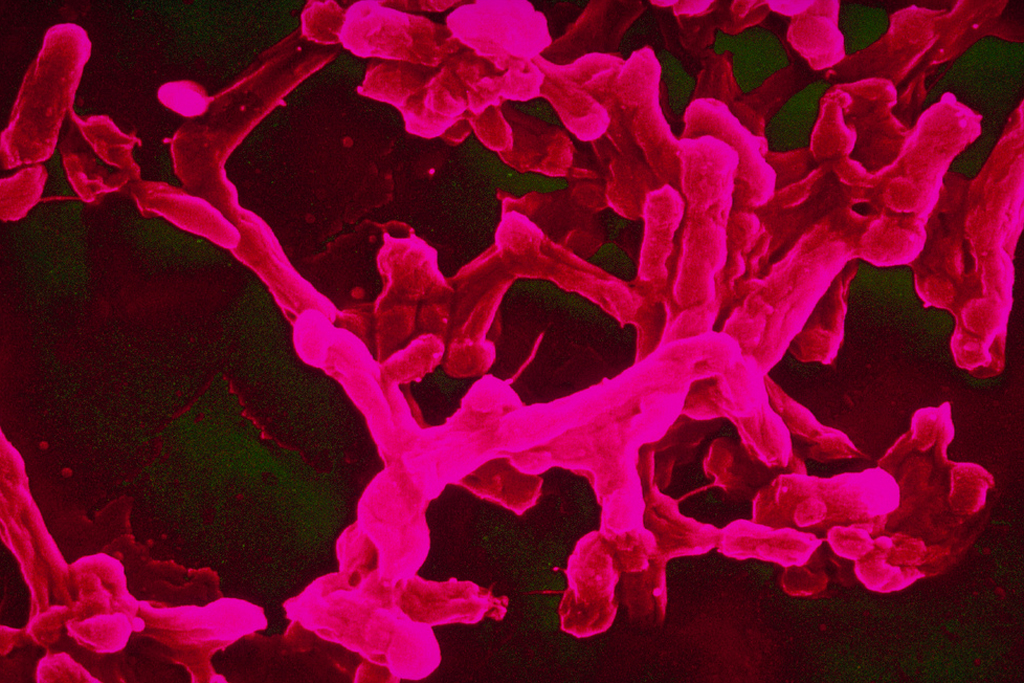Beyond Caring for the Sick to Disease Eradication in God’s Name
WCIU Journal: Health and Disease Topic
July 3, 2017
Many earnest believers in Jesus are working to overcome poverty, illiteracy, political corruption, spiritual darkness, and other works of the devil. Down through history believers have displayed a remarkable willingness to tackle the great world problems of the day. This is especially true in the case of disease.
Following Christ’s example, believers have devoted tremendous efforts and genuine compassion to treating and caring for the sick. Think of the many hospitals established by believers since the time of Constantine, or the health clinics and medical missionaries spread all over the globe today. Believers are even involved in disease prevention work, as in the case of the many groups who distribute anti-malarial bed nets, or denominations that have produced educational materials addressing HIV-AIDS.
But there is a relatively new reality in the fight against disease and it is the conviction of the Roberta Winter Institute that believers can play a significant role. When the late Ralph D. Winter’s first wife, Roberta, contracted multiple myeloma, he began a frantic pursuit for more information about the disease. In his research he discovered a fact that wowed him: in comparison to the truly enormous amount of money and human resources that are devoted to disease treatment, very few resources go toward disease eradication.
Or course, this fact is understandable. As Winter pointed out, “the load of healing the sick is such a burden there is no time or energy left over to delve into the eradication of disease pathogens” (Winter 2005). It’s a case of being so busy mopping up the floor that we can’t turn off the spigot.
Now, you may think I am trying to raise awareness about nutrition, exercise, or avoiding stress. While these preventative lifestyle principles are essential, Winter considered them defensive measures. He often used the following analogy:
It’s like walking through a sniper’s alley with a bulletproof vest on. The vest (prevention) will protect you from the sniper, but only so much. If a bullet hits you where your vest doesn’t cover, you’ve got to get the medic to remove the bullet and stitch you up (treatment/cure). But the most crucial objective is to eliminate the sniper (eradication). All of these are important, but the third is the most urgent and crucial. You can fumble the ball in treating the wounded and dodging bullets, but you can’t win the war without the offensive (Winter 2005).
Winter decided that if believers could summon the necessary resources and resolve to mount an offensive counter attack against eradicable disease, not only would it be dramatically helpful in alleviating suffering, it could also “radically add power and beauty to the very concept of the God we preach, and thus become a new and vital means of glorifying God among the nations” (Winter 2008, 221).
The eradication of smallpox in 1979 has been called “one of the greatest accomplishments undertaken and performed for the benefit of mankind anywhere or at any time” (Oldstone 2010, 84). Just consider all the suffering that immediately stopped the moment smallpox entered the archives of human disease. Think of the truly enormous amounts of money and human resources that are no longer necessary to treat it. What would be said and believed about Jesus if his followers teamed-up to eradicate other diseases? How much more would God be glorified if it were clear that it was done for that very reason? To demonstrate, consider the passages where healing revealed God’s character or resulted in people glorifying him: Matthew 15:30-31; Mark 2:12; Luke 5:26; 17:11-16;18:43; John 20:30-31.
As Richard Stearns, President of World Vision said about believers combating massive world problems like disease in his book The Hole in Our Gospel:
[it] would be on the lips of every citizen in the world and in the pages of every newspaper—in a good way. The world would see the whole gospel—the good news of the kingdom of God—not just spoken but demonstrated, by people whose faith is not devoid of deeds but defined by love and backed up with action. His kingdom come, His will be done, on earth, as it is in heaven. This was the whole gospel that Jesus proclaimed in Luke 4, and if we would embrace it, it would literally change everything (Stearns 2009, 219).
First John 3:8 as the Biblical basis for disease eradication
First John 3:8 states, “For the Son of God appeared for this purpose, that he might destroy the works of the devil.” As scripture portrays it, the foundational reason that Christ appeared and the purpose behind all of his activity—his teaching, his exorcisms, his healings, and the cross—was to conquer the devil and his death-dealing works (Heb. 2:14).
Given the prevalence in the New Testament of the assumption that sickness and disease are a work of the devil (Matt. 9:32; 12:22; 17:14-18; Luke 13:10-16; Act 10:38), plus the absolute finality implied in the word eradication, the cause of disease eradication seems to resonate quite profoundly with Christ’s purpose of destroying the works of the devil.
However, Ralph Winter once noted,
There is absolutely no evidence I know of in all the world of any theologically driven interest in combating disease at its origins. I have not found any work of theology, any chapter, any paragraph, nor to my knowledge any sermon urging us—whether in the pew or in professional missions—to go to battle against the many disease pathogens we now know to be eradicable (Winter 2008, 7).
Can it be true that there are no believers attempting to eradicate disease?
Truth be told, there are scores of individual believers who are at work in the World Health Organization, the Centers for Disease Control and Prevention or other public health entities. Their contributions are to be applauded and emulated. But the question is, can the world count on any coordinated, theologically motivated endeavor to eradicate the roots of disease?
A pattern to follow
A little known fact is that Rotarians have been at the forefront of the Global Polio Eradication Initiative since it began in 1988. Rotary clubs have contributed huge amounts of money and volunteer hours to immunize children around the world against polio and to raise public awareness about the disease. In that time the number of polio cases worldwide has decreased by more than 99% (http://www.polioeradication.org/Aboutus/Progress.aspx). In spite of this remarkable progress, tackling the last 1% of polio cases has proven to be difficult and very expensive. The greatest threat to this program’s success: a $665 million funding gap.
To help address this gap, the Bill and Melinda Gates Foundation donated half of the amount needed. Rotary International responded by challenging its clubs to raise $200 million in three years. Amazingly, after only two years, Rotarians have raised 88% of that amount (http://www.rotary.org/en/MediaAndNews/News/Pages/110614_news_gates.aspx).
The Rotary Foundation raised this impressive sum by challenging each of their 34,000 clubs to raise $2,000 per year, for three years. For comparison sake, there are about the same number of Methodist churches in the United States and three times as many Baptist churches (http://allchurches.com/). The Hartford Institute for Religious Research estimates that there are roughly 322,000 religious congregations (Protestant/Catholic/Orthodox) in the United States.6 If each of these congregations followed the Rotarian pattern and raised $2,000 per year, for three years, $1.9 Billion would be generated.
“Disease eradication, because it takes the globe as its clinic, faces monster-sized…complexities. The facilities are worse, the money scarcer, the sun hotter, the cold colder, the workers harder to find and to train, and the results harder to verify” (Needham and Canning 2003, 2). This cause requires a kind of zeal that is reminiscent of the dedication that has propelled missionaries around the globe for centuries. The trouble is that we as believers have never considered a coordinated disease eradication effort within the range of our responsibility.
One explanation for this may be because our theological way of understanding how to deal with disease begins to stumble at the question of eradication. We feel responsible to prevent disease because we see a model in the dietary and hygienic laws of the Old Testament that protected Israel from communicable diseases. We feel responsible to heal disease because we see Christ healing the sick throughout his earthly ministry. But the Bible doesn’t say anything explicit about eradication. After all, Jesus didn’t eradicate disease, nor did he give us a clear verbal mandate to do so, as he did with the Great Commission.
A good parallel to the cause of disease eradication is the movement to abolish slavery in the 19th Century. William Wilberforce in England challenged the injustice of slavery based upon deeply held moral convictions and a biblical understanding of innate human value and freedom. These same convictions propel those today who fight human trafficking in the name of Christ. But note that these convictions are NOT based on a few isolated verses or passages. In fact, not one verse in the Bible explicitly prohibits slavery.
In other words, Jesus didn’t abolish slavery, but he modeled an understanding of human value. In this same way, Jesus didn’t eradicate disease, but he modeled sensitivity to suffering and compassion for those who were sick. We can do likewise on a global level and for all future generations through eradication. After all, eradication can simply be thought of as healing every human being on earth of a given disease for the rest of history.
Does scripture have anything to say about eradicating disease?
One biblical concept that approaches an answer is the Hebrew term shalom. Shalom is understood around the world to mean peace. But to think of shalom as simply a state of affairs where there are no disputes or wars does not begin to describe the full meaning of the term. Shalom also denotes completeness, health, safety, quietness, rest and harmony. It implies a process, an activity, a movement to restore perfect wholeness (http://www.therefinersfire.org/meaning_of_shalom.htm).
This fuller sense of shalom brings new meaning to Christ’s title, “Prince of Peace/Sar Shalom” (Is 9:6). This is why when John the Baptist asked if Jesus was the Messiah, Jesus pointed to the shalom he was manifesting, “The blind receive sight, the lame walk, those who have leprosy are cleansed, the deaf hear, the dead are raised, and the good news is proclaimed to the poor.”(Lk 7:22)
When Jesus said, “Blessed are the peacemakers” (Mt 5:9), he was describing the role believers were to have as sons of God, taking over the family business in bringing shalom to this broken, diseased, war-torn world.
Given this understanding of shalom the Bible has quite a lot to say about disease eradication and how it fits within the scope of responsibility of the body of Christ.
References
Needham, Cynthia A. and Canning, Richard. 2003. Global Disease Eradication: the Race for the Last Child. Washington DC: ASM Press.
Oldstone, Michael B. A. 2010. Viruses, Plagues, and History: Past, Present and Future. New York: Oxford University Press.
Stearns, Richard, 2009. The Hole in Our Gospel. Nashville: Thomas Nelson.
Winter, Ralph D. 2005 “Editorial Comment.” Mission Frontiers, July-August.
______. 2008. Frontiers in Mission: Discovering and Surmounting Barriers to the Missio Dei. Pasadena: WCIU Press, 221
Brian Lowther serves as the Director of the Roberta Winter Institute and is also the interim pastor for University Baptist Church in Palm Desert, California.


